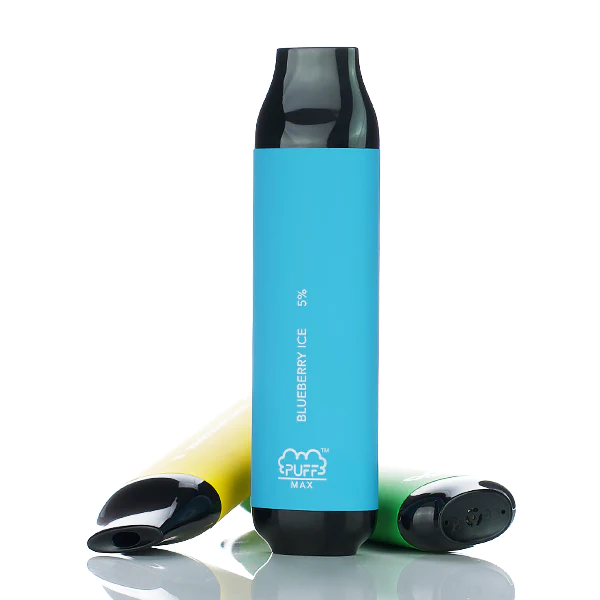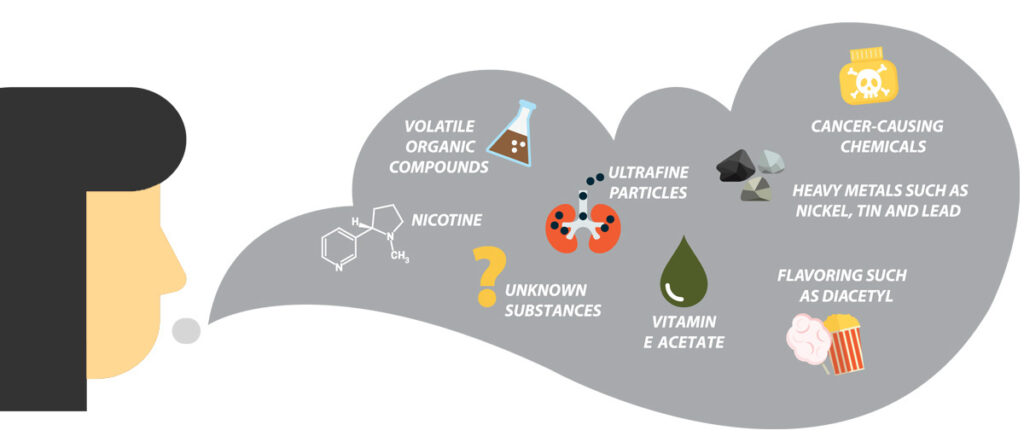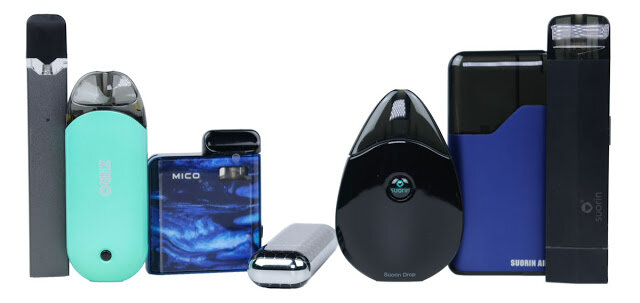The On-Going Vaping Issue in Maine Schools and How Educators Can Help
The latest data, from the 2021 Maine Integrated Youth Health Survey, shows vaping continues to be an issue in Maine schools despite a decline in usage since 2019. More students use vape products now than smoke traditional cigarettes.
Schools across the state have worked hard to curb electronic cigarette usage, doing things like installing vape detectors in bathrooms, but addiction experts say more work is needed to help educators understand the continually changing vape products, how addiction manifests itself in classroom behavior, and what help is most useful for students.
31.7%
of high school students have used an electronic vape product.
17.4%
reported using a vape device at least once in the last 30 days.
57.6%
last time they used an electronic vapor product inhaled nicotine.
25.4%
last time they used an electronic vapor product inhaled marijuana, THC or hash oil.
The Changing Vape Products
When vaping first became popular, the most prevalent devices teens used to inhale looked like USB drives, small and inconspicuous, especially in schools. However, addiction experts now say the industry has changed, and continues to change with puff bars becoming the more common device in the vaping world.

The evolution of the products themselves has changed-for so long it was Juul, and that looks like a USB stick. A lot of the new products don’t look like that—they look like highlighters now. There is so much diversity in what they look like; adults often don’t know what they’re looking at,” said Rowan McFadden with Healthy Androscoggin, an organization that focuses on substance and tobacco use prevention.
McFadden says understanding the differences in the design of the products is the first step in helping educators recognize if a student is using while on school grounds.
“Many of these products don’t have a lot of vapor so it’s easy to use randomly. In the beginning, the big cloud was associated with vaping and now a lot of products kids are using don’t have a lot of aerosol cloud coming out so you can blow a puff into your locker and move on and people wouldn’t know,” said Joanne Joy with Healthy Communities of the Capital Area.
Pictured on this page are the more common vape products that are currently on the market. While these are some, addiction experts say they are by no means all. Vaping can be done through a vape watch that looks like the common digital watches available for sale, or through a hooded sweatshirt, vaping out of the strings attached to the hood.
Vape Impacts on School Behavior
The medium-sized puff bar contains about 400 puffs and can contain as much nicotine as 2-3 packs of cigarettes. According to behavioral health experts, teens tend to inhale more deeply and in turn are getting higher levels of nicotine in their lungs.
This amount of nicotine, particularly the withdrawal when a student can’t vape, can cause problems in school including depression, high anxiety, and increased stress.
“For teachers, it’s about identifying those moods. Asking teachers in general to be the vape police is really extreme. It’s more of an awareness for them. If you sense that a class group or a couple of kids in your class seem to have a heightening behavior problem in the middle of class that could be the point where intervention is necessary. In some schools they’ve had challenges with their sports teams not having the stamina to practice because they’re vaping and using marijuana,” added Joy.
What’s in an E-Cigarette?

How To Support Students
Research shows suspension for vape usage generally increases the frequency of vaping, but programs that are alternatives with an education component can help.
The state created eight Maine Prevention Networks, in part to help those in need of addiction support. They will be fully operational on January 1, 2023, with employees who can help schools create anti-vaping policies and conduct presentations to help students understand the true impact of vaping.
McFadden says ensuring schools have access to and refer students to programs like “My Life My Quit” is crucial in stopping kids from vaping and potentially using more serious drugs later in life. The program, among other things, helps teens deal with stress in better ways; stress is one of the top reasons youths admit to starting to vape, and one of the top marketing strategies of the vape companies to get kids hooked on their products—claiming vaping is a stress reliever.
The “My Life My Quit” program offers the following advice to help shape a conversation with a teen who asks about tobacco or seems interested in quitting using tobacco:
- Nicotine addiction can happen very quickly.
- All tobacco products, including vaping devices like e-cigarettes, contain nicotine and are addictive. Many teens believe vaping is not tobacco. Let them know vaping is tobacco and it has the same addictive properties whether they are smoking cigarettes, e-cigarettes, or vaping.
- The longer a teen uses nicotine, the more addicted they are likely to become, and the harder it will be to stop.
- Medications used for quitting tobacco (nicotine replacement therapies – NRT) have been approved as effective treatment to help adults quit tobacco. If a teen asks about quit medications, refer them to a healthcare professional who can help decide whether these medications might work in their individual situation.
To speak to someone in your area about hosting a training in your area or to receive more resources, contact the prevention experts in your area.
District 1- York–York County
Southern Maine Health Care
Alexa Christie—alexa.christie@mainehealth.org
District 2-Cumberland–Cumberland County
Portland Public Health
Val Johnstone—vjohnstone@portlandmaine.gov
Samantha Liang—sliang@portlandmaine.gov
District 3-Western–Androscoggin, Franklin and Oxford Counties
Androscoggin–Healthy Androscoggin
Rowan McFadden—rowan.mcfadden@cmhc.org
Emily Dooling Hamilton—doolinem@cmhc.org
Franklin–Healthy Communities Coalition
Sarah Mulcahey—sarah.mulchahey@mainehealth.org
Lillian Hunt—lillian.hunt@mainehealth.org
Oxford–Healthy Oxford Hills
Courtney Lavornga—courtney.benett@mainehealth.org
District 4-Midcoast–Waldo, Sagadahoc, Knox, Lincoln Counties
Waldo– Jemma Penberthy-jemma.penberthy@mainehealth.org
Sagadahoc–Southern Midcoast Communities for Prevention
Andrea Saniuk-Gove–andrea.sainu-gove@mainehealth.org
Knox–Knox County Community Health Coalition
Becky Boober, Ph.D.–beckyhbooberkcchc@gmail.com
Lincoln–Healthy Lincoln County
Will Matteson–wmatteson@healthylincolncounty.org
District 5-Central–Somerset and Kennebec Counties
Kennebec–Healthy Communities of the Capital Area
Renee Page – r.page@hccame.org
April Hughes–a.hughes@hccame.org
Somerset–Somerset Public Health
Sean Landry—slandry@rfgh.net
District 6-Penquis–Penobscot and Piscataquis Counties
Bangor Public Health
Roxane Dubay—roxane.dubay@bangormaine.gov
District 7-Downeast–Washington and Hancock Counties
Healthy Acadia
Mia Petrini—mia@healthyacadia.org
Katie Sell—katie.sell@healthyacadia.org
District 8-Aroostook–Aroostook County
Aroostook County Action Program
info@acap.org
Tribal Health District—5 Tribal Communities
Wabanaki Public Health and Wellness
hello@wabanakiphw.org


